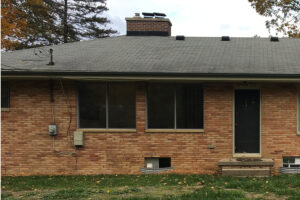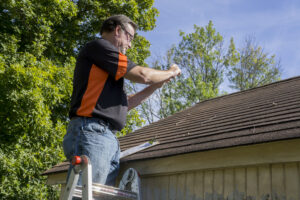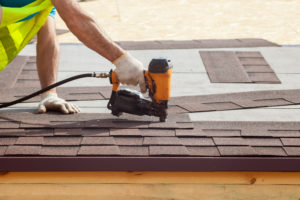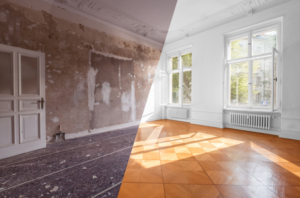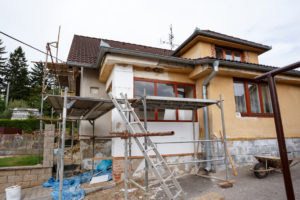Imagine if you always have to clean up the house because your shoes always bring in mud when you walk in. This is because your compound is always water-logged. None enjoys doing such tasks.
Water-logged areas in your backyard or around the house can create a lot of harm. For example, plants will die if they are underwater for too long.
Even the wet areas can also act as a breeding spot for mosquitoes. Mowing your yard over wet ground becomes a difficult task too. These swampy areas may be caused by heavy rainfall or wrong plants that prevent water from being absorbed into the ground.
Why you should be concerned…
If water flow is left uncontrolled, it can be awful because water may flow into any part of the house. And if left unattended, it can cause structural damages. For any structural damage in your home, you can reach out to ProRana. They offer the best consultations in remodeling and water damage restoration.
What to do?
In this article, we would look at simple Do-It-Yourself (DIY) drainage solutions. Many lands have natural drainage by which excess water flows from a water-logged area to lakes or rivers nearby. However, this natural drainage may be inadequate; hence, the need for human-made drainage.
If your land always looks muddy, use the following DIY land drainage tips to create a dryer land:
- Extend the downspouts to lead away from the house
Downspouts are vertical pipes that can be attached to your house to drain rainwater from the roof. Extending the downspout away from your house usually solves drainage problems.
How to extend a downspout:
- Measure where your downspout currently ends at the length you wish to extend it to.
- Attach a downspout elbow to where it currently ends with a metal screw, pointing it in the direction you want.
- Attach the desired length of extension downspout to the other end of the elbow.
- Create a rain garden
Having a rain garden is one of the best DIY solutions for land drainage. This is because a rain garden can help soak in excess water as water-loving plants. Also, a rain garden may be situated a few meters away from your house, and you can direct the extended downspouts towards the garden.
All you have to do is survey your compound for a dry spot that can easily retain water. Then plant the right kind of plants on the land.
How to create a rain garden:
- Plants with deep fibrous roots are the best to plant.
- Replace hard surfaces like concrete with penetrable concrete, porous brick, and stepping stones.
- Example of plants for these are ferns, small, native trees, and wildflowers. You’ll find these plants at local plant nurseries close to you.
- Create a Dry Well
Dry wells are human-made holes filled with stones or gravel to receive drainage water and allow it to soak away into the ground.
How to create a dry well:
- Dig the ground to the water capacity you want it to retain. A dry well could be large enough to receive a 10 or 15 minutes rainstorm.
- You can expand the capacity of the well by burying special dry well containers.
- Get the container of your choice to fit into the ground.
- Surround the container by using gravels or any other porous materials when placed in the ground.
- Make use of a rain barrel or basin
Rain barrels are large containers, just like the containers used for dry wells, placed at the bottom of a downspout. They are used to collect the water. The good part is that you can use the water collected water your garden and lawn when they are dry.
How to make use of a rain barrel
- Get a barrel of different sizes, depending on your choice.
- Place the barrel at the opening of the downspout.
- If you have more than one downspout attached to your roof, get more rain barrel.
- The more downspouts you have, the more water you can collect with the rain barrels.
- Construct a creek bed
A creek is a natural flow of a small body of water which is often smaller than a river. A creek may also be human-made. A creek bed acts as a pathway where water runs through from a high water-flow point to a low spot.
A creek bed is best used if the slope of the high water flow is directed towards the low spot because it would flow naturally.
How to construct a creek bed
- Identity channels where water flows through especially after rain.
- Mark the natural flow with landscaping paint.
- Dig a trench along the markings which could be 5 inches deep.
- Preserve the soil that you dug up as it would serve as part of the gravel.
- To prevent weeds from growing in the trench, line the creek bed with landscaping fabric.
- Cover the entire bed with gravel and the soil already dug up.
- Carefully arrange the pea-sized pebbles from the largest rocks to the smallest into the trench.
Other ways include installing an under-ground drainage pipe or installing a French pipe
How ProRana can help…
Before taking on any DIY home improvement project, you can get proper professional guidance from ProRana. We are house remodeling, property maintenance, and water damage restoration experts.
Contact us today to learn how we can help transform your home!


